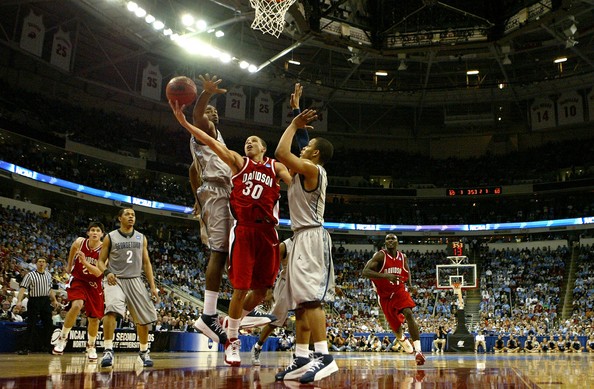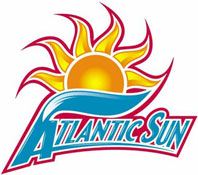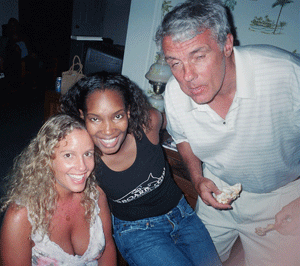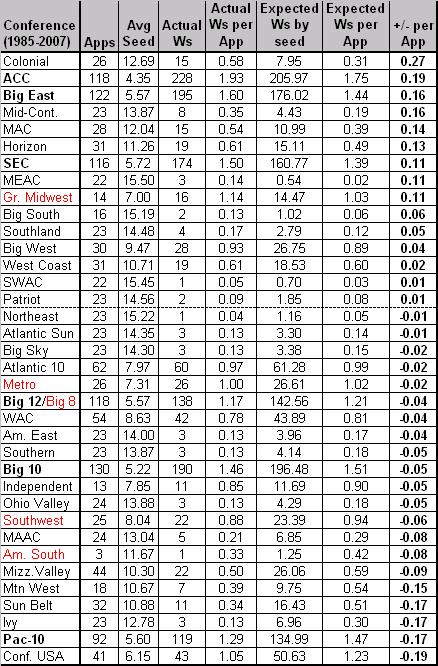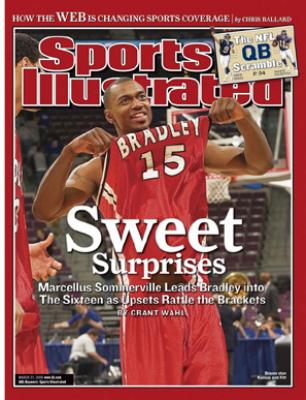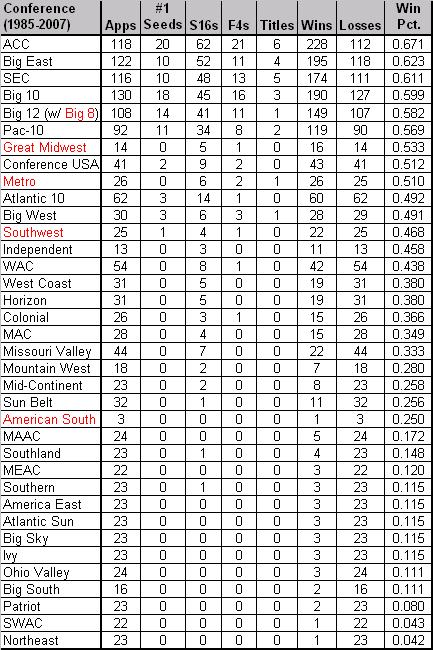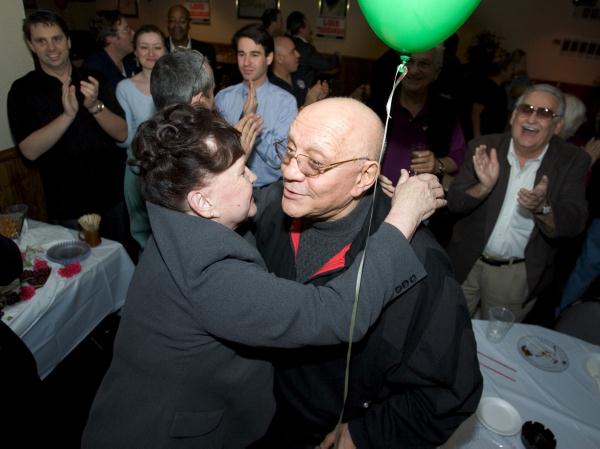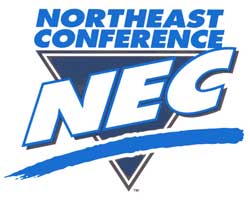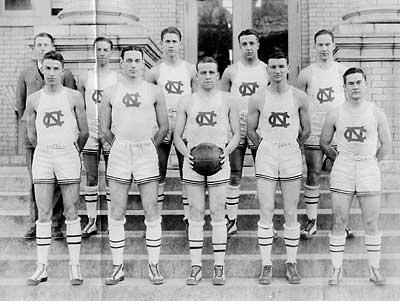ATB: New Years Weekend Wrap
Posted by rtmsf on January 5th, 2009
Since the ATB writers have been in a self-induced coma as a result of last week’s NYE festivities (hey, it’s hard living in your mom’s basement), rather than rehashing a bunch of stale games from Wed-Sun, we thought it’d make more sense to just hit some highlights and trends of things we’re watching as the haze continues to wear off from our vision and the strange burning sensations subside.
Some News & Notes.
- Is Tubby Smith on the short list of coaches looking at Arizona? Maybe the Tubbster realized that, yes, those icicles on your c#&k really do stay there for six months of the year, and as such, Tucson is looking pretty tasty.
- Former Hoosier and UAB carpetbagger Armon Bassett ended up transferring to Ohio U. He will be eligible after next fall’s quarter.
- Kyle Whelliston is awesome. Seriously. The Mid-Majority founder and resident subversive in the college hoops world discovered a clear trend showing that the BCS teams are playing each other more often during the out-of-conference slate, and the mid-majors less. He thinks this is good for the mids, but we’re not so sure. The mids really need those opportunities to shine that beating S. Florida and Oregon St. UCLA and Duke provide.
- The Dagger had a great year-in-review wrapup article over at Yahoo Sports, as well as a look at what college hoops might look like if the BCS was running things over here.
The Big East is insane this year. In just the last three weeks, we’ve seen UConn look like the most likely hurdle for North Carolina through its clutch win in Seattle vs. Gonzaga. Then we jumped on the Georgetown bandwagon after the Hoyas proceeded to go up to Storrs and thump those Huskies behind a balanced offensive attack and its standard sticky defense. Only for our mis/pre-conceptions to be challenged again when Pittsburgh chose to use this weekend’s matchup in DC at Georgetown to manhandle (manhandle? try superman-handle… the Panthers had more o-rebs – 18 – than the Hoyas had total – 17) the same team that looked so fantastic against UConn five days prior. We really don’t know what to make of this league with these performances. Given the way things have gone so far, Pitt should now be in position to get its bell rung by UConn in Western Pa. We just don’t know. One thing we think we can say without too much hedging is that UConn, Georgetown, Pitt, and possibly Notre Dame, Syracuse and Louisville (if those three ever get it completely going), are the best top six to a conference we’ve ever seen. It’s likely that all six of those teams would win the SEC and compete with UCLA for the Pac-10 crown. In 1995, the ACC had a really strong top four, but nothing like this group. As for Georgetown, we noted after the UConn game that their lack of strong bench production could end up biting them in the arse down the stretch, and it was absolutely exhibited here (2 pts). This will ultimately be the Hoyas’ downfall, as their 29-game homecourt winning streak was snapped when Pitt went on a 17-4 run to blow open a 40-40 tie game. As much as we love Greg Monroe, he was schooled by the savvier Dejuan Blair, who dropped 20/17 on the bigger player.
Monday update: Notre Dame 73, Georgetown 67. Notre Dame defeated Georgetown at home tonight, keeping their 44-game homecourt (and 19-game conference) winning streak alive. This occurred a mere two days after the Irish laid a leprechaun egg against St. John’s in NYC. Just like that, Georgetown is now 1-2 in the conference, when one week ago tonight they looked like the team to beat. Wow.
Is the SEC surging? It’s probably too little, too late, for the SEC to save its sinking sunk RPI in time to matter much come Selection Sunday, but the last few days of games showed that the league may have some fight left in it, following up on Arkansas’ upset of Oklahoma and pulling off a few key wins in games that its teams would have lost in November or early December. Consider the following scores:
- South Carolina 85, Baylor 84. SC is one of the definite surprise teams of this season, proving once again that Dave Odom has been the luckiest man alive to have bilked multiple schools of millions of dollars by passing himself off as a legitimate head coach. Getting a win over a ranked team in a true road game is something the SEC hadn’t done all year. Until Friday night. Shooting 54% and putting all five starters in double-figures helps.
- Florida 68, NC State 66. We probably shouldn’t be giving too much love to a team that allowed its marginal ACC opponent to shoot 59% on its home floor, but hey, an intersectional win is a win! Nick Calathes saved the day with 24 of his 34, including the go-ahead jumper with 11 seconds left, coming in the second half.
- Alabama 88, Georgia Tech 77. Bama will be as good as Ronald Steele is and he was excellent on this night (23/10), echoing memories of his healthy first two years in Tuscaloosa. Ga Tech appears to once again be going nowhere fast.
- Mississippi St. 82, Houston 65. MSU simply took control of this game, holding an 8-2 Houston team to 28% shooting in the process.
- Vanderbilt 78, Massachusetts 48. Wow, a complete obliteration of UMass in Amherst by a team that had really shown next-to-nothing so far this year. Derek Kellogg has lost that team.
- Louisville 74, Kentucky 71. Yeah, it’s an L for the SEC, but Kentucky has been playing better ball lately and took Louisville to the brink before Pitino whipping boy Edgar Sosa dropped a 25-foot three to win the game with 2.6 seconds remaining. There may not be a better inside/outside duo than UK’s Jodie Meeks and Patrick Patterson (50/18 in this game).
Most Impressive Win of the Weekend. Wake Forest 94, BYU 87. It was televised to all of six people in America on The Mountain network, but Wake going into the viper’s pit known as the Marriott Center in Provo where the Cougars had won their last 53 games against all comers was very impressive. This was especially so given that Wake was teetering in the mid-second half before their assassin Jeff Teague (30/4/4) and muscle man James Johnson (22/15) took over the game, as the tired BYU players starting coming up short on their shots. What’s the difference between this Wake team and some others (most notably, the Chris Paul teams) in the recent past? This Deacon squad plays defense. Whether it’s by design or simply the absurd athleticism that three potential lottery picks in the starting lineup (Teague/Johnson/Aminu) provide, their length and size bothers teams, and as a result, the Deacs are currently the fifth most efficient defensive team in America. The UNC-Wake game next Sunday in Winston-Salem looms large to see just how good this Deacon team can be.
What Has Happened to the Zags? Utah 66, Gonzaga 65. It’s almost as if that loss to UConn two weeks ago took all the wind out of the sails of the Zags. Since that game, they’ve lost at home to Portland St. and now away at Utah in a game they had multiple chances to win. Next they’re at Tennessee on Wednesday before WCC play starts. Meanwhile, conference foe St. Mary’s is cruising along at 14-1, although against admittedly lesser competition. As for the Zags, there is top ten talent on this team, and they need to stop feeling sorry for themselves because they lost a heartbreaking game. Jeremy Pargo in particular needs to get his team’s attention and back on the right track, and Austin Daye needs to improve his shot selection (a 6’11 guy shouldn’t be shooting 44% from the field); otherwise, America’s favorite “underdog” from the Pacific Northwest will once again disappoint in March.
USC is the Most Confounding Team in America. USC 83, Oregon 62 & Oregon St. 62, USC 58 (OT). USC once again has several future NBA Draft picks on its roster, but as has been a trend in recent years for the Trojans, they are just as likely to shock you with an efficient evisceration of an opponent as they are to simply not show up for the engagement at all. Case in point was the Oregon two-fer last weekend. On Friday night, the Trojans went into Oregon’s Macarthur Court (one of the tougher venues in the Pac-10, even in a year when Oregon is clearly down) and completely humiliated the Ducks with a +21-pt second half (probably its best half of the year). Then, riding that wave of success, USC visited Oregon St. on Sunday – remember, the Beavers went 0-18 in the Pac-10 last season – and managed to hand OSU its first conference victory in 683 days. If anyone can explain this team, let us know.
Some Other Scores That Caught Our Eye.
- UNLV 56, Louisville 55. Of course, this was prior to the victory over their nemesis on Sunday, but the Louisville bugaboo of poor shooting (29.6%), weak guard play and a seeming lack of focus allowed UNLV (w/o Wink Adams) to come east and steal a victory. After this game, Edgar Sosa reportedly was asked to transfer by Coach Pitino – he responded with his best game in two years against Kentucky (18 pts).
- Marquette 79, Villanova 72. Someone send us an email when you can figure out just how good either of these teams actually are. Both are two-loss guard-oriented teams that have similar RPI profiles (#29 and #30), capable of a major upset at any time, but not quite strong enough to reach the top tier of the Big East.
- Arizona St. 90, Stanford 60. Has a BCS team ever defeated another BCS team by 45 points at home, only to lose by 30 points in the next week to another BCS team at home? That’s a 75-pt difference for you mathemagicians out there. Stanford followed up this blasting with another home win against Arizona on Sunday, so maybe the Cardinal just had a bad game against Herb Sendek’s team.
- Xavier 84, Virginia 70. XU really needed to win this road game against an ACC team (even a likely bottom-dweller) to convince folks that their rough two game stretch against Duke and Butler last month is behind them.
- Illinois St. 86, Creighton 64. ISU stamped itself as the team to beat in the MVC with this big home win on Saturday. Now 14-0, the Redbirds used a huge second half to blow the game open led by Osiris Eldridge’s 20/9.
- Michigan 74, Illinois 64. This was a big win for John Beilein’s UM squad, because the Illini have been playing extremely well of late. Amazingly, after only two games, only Wisconsin and Michigan St. are unbeaten (2-0) in the Big Ten race.
- Duke 69, Virginia Tech 44. A 13-point second half will not get it done in Cameron. Although Duke is #2 now, we still don’t believe in them in the long term. Only five points came off of their bench in this game.
- California 81, Arizona St. 71. If this keeps up, Mike Montgomery will have to be in the conversation for NCOY. Two days after demolishing Stanford, Arizona St. got outhustled and outplayed in the second half (Cal shot 68% behind Jerome Randle’s 26/10 assts). This was two nights after putting away Arizona, 69-55. Monty has this program competing way ahead of schedule.
On Tap Tuesday. check our now-daily Set Your Tivos feature for the games to watch tomorrow.






























